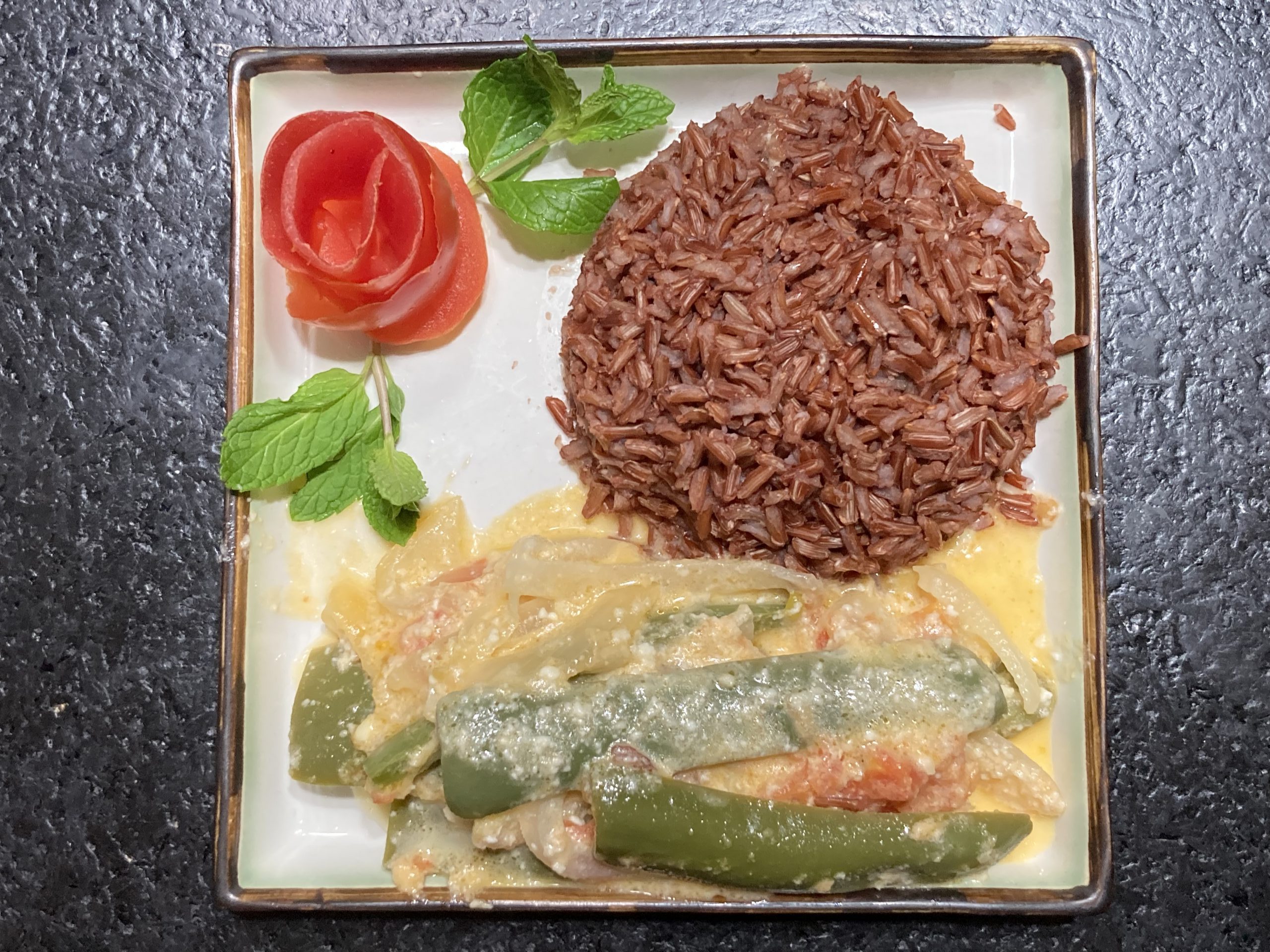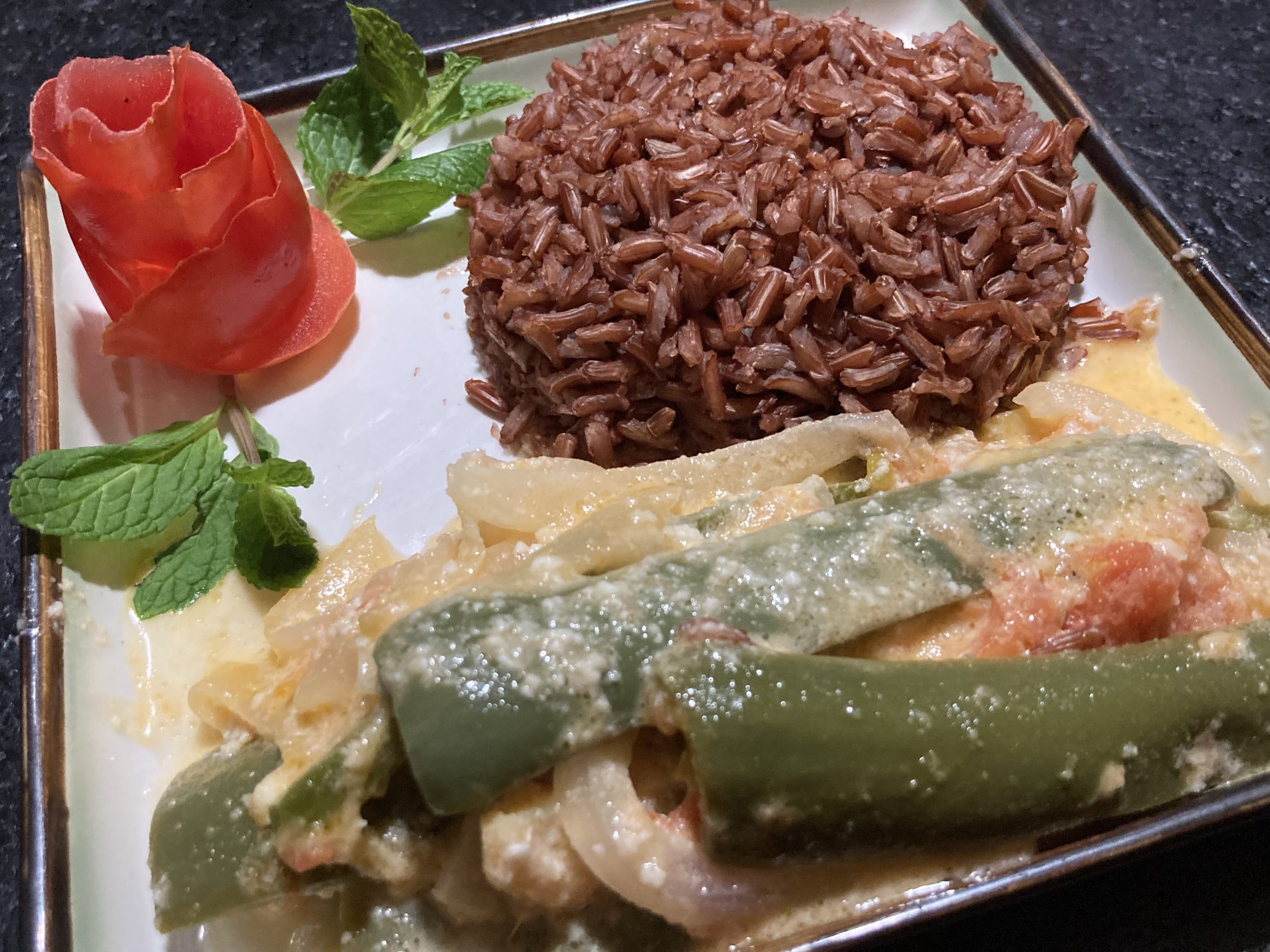That is so hot
Hot pepper and cheese bring out the best in each other. Every bite is a mouthful of drama. The impending heat sets the stage with a pungency you can smell before you bite. Then comes the pain. When all seems lost, the cheese swoops in with its creaminess, neutralizing the menace. And just when you think the danger has passed, you take another bite, starting another cycle of tension and resolution that would make Shakespeare salivate.
This dynamic is what is behind the power of the jalapeno popper, and its big brother the chile relleno, and their New Mexican cousin, the green chile cheeseburger. This is why there is a jar of red pepper flakes on the counter of every pizzeria, and why someone clever invented pepper jack cheese.
I call it “hot pepper” because I can’t bring myself to use “chili,” that word being a deformation of the plant’s birth name, chile (“chee-lay”), which is a typo in English. Whatever we call this plant and its fiery pods, the apex of cooking it with cheese is without a doubt ema datshi, the national dish of hot pepper-happy Bhutan.
Ema Datshi is a simple dish with a big personality. Little more than stir-fried peppers in a thick white gravy, it looks like a coconut curry, and is as spicy as the peppers you choose.
The pepper plant first appeared in the Andes, and was domesticated in Mexico, from where it traveled the world. There are three distinct pepper species in the Capsicum genus, many of which are prized largely for how much pain they cause.
In addition to the chemical burns in your mouth, capsicum species can trigger endorphins and adrenaline, raise your heart rate, make you sweat, and give you a giddy buzz that’s unique among food-borne sensations. Their soulful, almost smoky flavor contains bitter, pungent and sweet notes, all of which pair exceptionally well with cheese.
Having spent nearly a month in Bhutan, I can’t overstate the heat levels to be found in a typical bowl of ema datshi. It would be comical if it weren’t so debilitating.
But to the Bhutanese it’s neither comical nor debilitating. Ema datshi is energizing, and serious business. Bhutanese need their ema datshi like Russians need their vodka.
Sometimes it feels like every serving of food in Bhutan is some form of ema datshi. Ema datshi with radish, ema datshi with greens, ema datshi with pork, with potato, with mushrooms. Adding to the masochism, it’s often served with a hot pepper sauce called izay.
Sometimes while eating a particularly spicy batch of ema datshi, you perversely find yourself reaching for more in hopes that more cheese will somehow help, even though this antidote is inextricably linked to the cause of suffering. It’s like a codependent relationship in your mouth.
Several test batches into the research for this story, I found myself Googling “too much ema datshi,” curious if there were any pitfalls to an ema datshi diet. Instead of red flags, I found cooking videos from a land where too much ema datshi can only be a good thing.
In my favorite video, a soft-spoken chef named Dewas Rai put on a culinary masterclass while making this simple dish. After prepping the vegetables effortlessly with an oversized cleaver, Chef Dewas went to the stove and did some kind of blessing. Without a spatula or any kind of implement, Dewas proceeded to stir-fry the vegetables in an omelet pan by flicking them into the air like hot cakes. The peppers suspended in the air before landing back in the pan with a sizzle. For a garnish, Dewas made a rose from a leftover tomato skin.
I’m not saying you need to watch this video to make a good ema datshi, because the recipe below, heavily influenced by Chef Dewas, will do the trick just fine. It’s not a difficult or complicated dish. It’s just that Dewas happened to use ema datshi as a teachable moment. An excuse to do art. A public display of spirituality. Here’s a link: (http://tiny.cc/emadatse)
I had been making ema datshi for years, and was very inconsistent. But now I am firmly on the path, even if I still use a spatula. I have been using any and all peppers I can get my hands on, including dried red ones and fresh, plump jalapenos. I’ve made it with bell and anaheim peppers for the kids, and serrano peppers for happy hour.
Ema Datshi a la Chef Dewas Rai
This dish is traditionally served with short grained Bhutanese red rice, but you can serve it with anything, including other types of rice, bread, roasted squash, or other starchy vegetables. I’ve even added leftover ema datshi to a cafeteria hamburger, and I can’t wait to do it again.
When making this dish, wash your hands all the time. Not just before cooking, but after. Not just after using the bathroom but before.
Serves 2
2 tablespoons butter
2 cloves of garlic, minced or pressed
2 tablespoons cooking oil
1 inch cube of ginger, peeled and sliced
1 medium sized tomato, peeled and diced, with the peel turned into a rose
½ pound hot peppers sliced lengthwise, seeds removed according to your heat tolerance and the heat of the peppers
½ pound of feta cheese
Salt to taste
To bless the stove, and the meal, touch your hand to your heart, and then the stove, and then your heart again, and then the stove again. Turn the heat to medium/high, add the butter and garlic, and saute until the garlic is browned. Add the oil, ginger, tomato and onion, and stir-fry for about two minutes, or until everything is cooked. Add the peppers, and a ½ cup of water to keep the pan moist. Stir-fry another 3-5 minutes to cook the peppers. Crumble in the cheese, the salt of which will pull more water out of the peppers, making it soupy. Add more salt to taste.
Scoop the ema datshi onto a plate. Garnish with the tomato rose.
##

